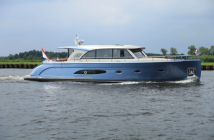(CNN) Scientists have found thriving communities of coastal creatures, including tiny crabs and anemones, living thousands of miles from their original home on plastic debris in the Great Pacific Garbage Patch – a 620,000 square mile swirl of trash in the ocean between California and Hawaii.
In a new study published in the Nature Ecology & Evolution journal on Monday, a team of researchers revealed that dozens of species of coastal invertebrate organisms have been able to survive and reproduce on plastic garbage that’s been floating in the ocean for years.
The scientists said that the findings suggest plastic pollution in the ocean might be enabling the creation of new floating ecosystems of species that are not normally able to survive in the open ocean.
Unlike organic material that decomposes and sinks within months or, at most, a few years, plastic debris can float in the oceans for a much longer time, giving creatures the opportunity to survive and reproduce in the open ocean for years.
“It was surprising to see how frequent the coastal species were. They were on 70% of the debris that we found,” Linsey Haram, a science fellow at the National Institute of Food and Agriculture and the study’s lead author, told CNN.
Haram and her colleagues examined 105 items of plastic fished out of the Great Pacific Garbage Patch between November 2018 and January 2019. They identified 484 marine invertebrate organisms on the debris, accounting for 46 different species, of which 80% were normally found in coastal habitats.
“Quite a large percentage of the diversity that we found were coastal species and not the the native pelagic open ocean species that we were largely expecting to find,” Haram said.
They did still find a lot of open ocean species, Haram added. “On two thirds of the debris, we found both communities together … competing for space, but very likely interacting in other ways.”
Haram said that the consequences of the introduction of new species into the remote areas of the ocean are not yet fully understood.
“There’s likely competition for space, because space is at a premium in the open ocean, there’s likely competition for food resources – but they may also be eating each other. It’s hard to know exactly what’s going on, but we have seen evidence of some of the coastal anemones eating open ocean species, so we know there is some predation going on between the two communities,” she said. Read more:
https://www.cnn.com/2023/04/17/world/plastic-pollution-ocean-ecosystems-intl-climate/index.html




